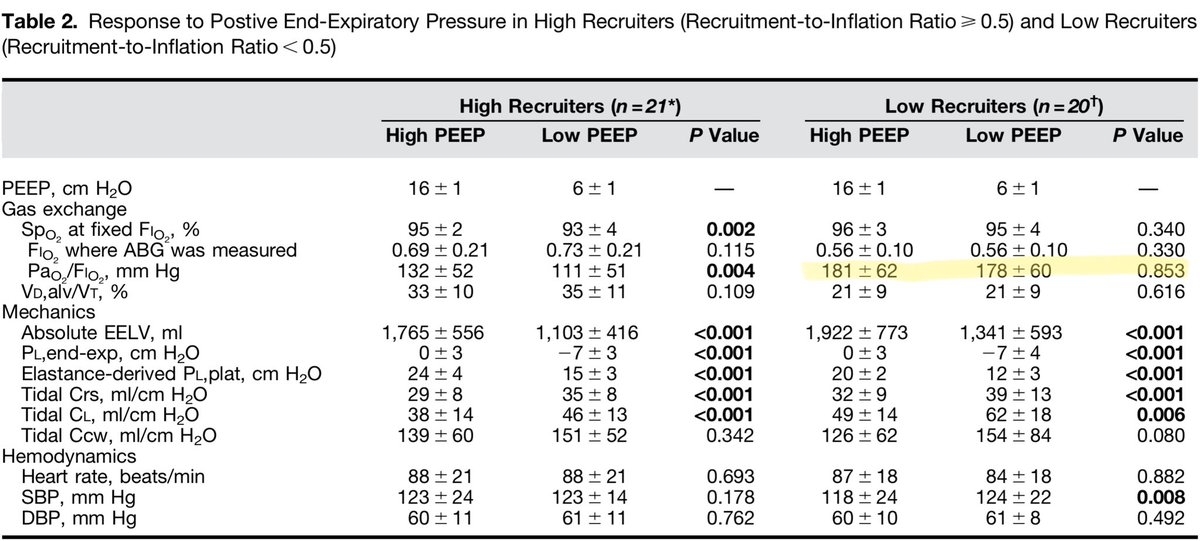1/ I want to take some time to explain why I share anecdotal articles describing ‘differences’ in COIVD19 patients by @gattinon. The hospital I work at with has been taking an individualized approach to the management of ARDS for at least 5 years.
2/ For ARDS patients we routinely measure respiratory system mechanics (including transpulmonary pressure), the response to PEEP (two levels of PEEP with a difference of 5 cm H2O), and assess recruitment potential (using a method we recently published https://www.atsjournals.org/doi/10.1164/rccm.201902-0334OC).">https://www.atsjournals.org/doi/10.11...
3/ Our recent publication demonstrated that patients with lower recruitment potential typically do not show an improvement in P/F with higher PEEP, and lower systolic blood pressure on high PEEP.
4/ With our intubated COVID19 patients, those WITH and WITHOUT recruitment potential are all responding to PEEP with regards to oxygenation early in their course. But still have persistently low P/F ratio. So they mostly end up proned.
5/ So far the only explanation I’ve seen proposed to explain why patients with low potential for recruitment are having a positive response to PEEP are from letters by Gattinoni et al. Which remind us that PaO2 can improve through reduction in cardiac output (reducing shunt).
6/ Suggesting that we should not be fooled so easily by PaO2 (this is not a new concept either, oxygenation improvements ≠ survival benefit). So should we blindly treat the PaO2 with higher PEEP?
7/ Community hospitals are doing their best to follow evidence based guidelines to use high PEEP. But benefits of PEEP should not be measured by PaO2 alone. The potential negative effects must be considered.
8/ So I follow with interest the comments from Gattinoni, as it has helped to explain the differences we see in those with higher and lower potential for recruitment (regardless of compliance which I think is adding confusion for many).
9/ We are not changing our practice to reflect recommendations by Gattinoni, but our patients with low recruitment potential are acting like what they describe as Phenotype L in the early phase of treatment, but our compliance in these patients is ≥ 40 rather than > 50 mL/cm H2O
10/ On a side note, I think we should be measuring Ventilatory Ratio (measure of VD/VT) to also inform PEEP selection. https://www.atsjournals.org/doi/10.1164/rccm.201804-0692OC">https://www.atsjournals.org/doi/10.11...
11/ We are hoping to begin our CAVIARDS-19 study next week (Careful Ventilation in COVID-19 induced ARDS). We will stratify PEEP by recruitment potential vs. High/Low PEEP table (which ever one is preferred by the participating hospitals).
12/ One final point. Low compliance does NOT imply the lung is recruitable. The potential for recruitment we assess is based on the recruited volume due to PEEP, not simply their respiratory system compliance. This is a oversimplication I feel regarding “L” and “H”.

 Read on Twitter
Read on Twitter


